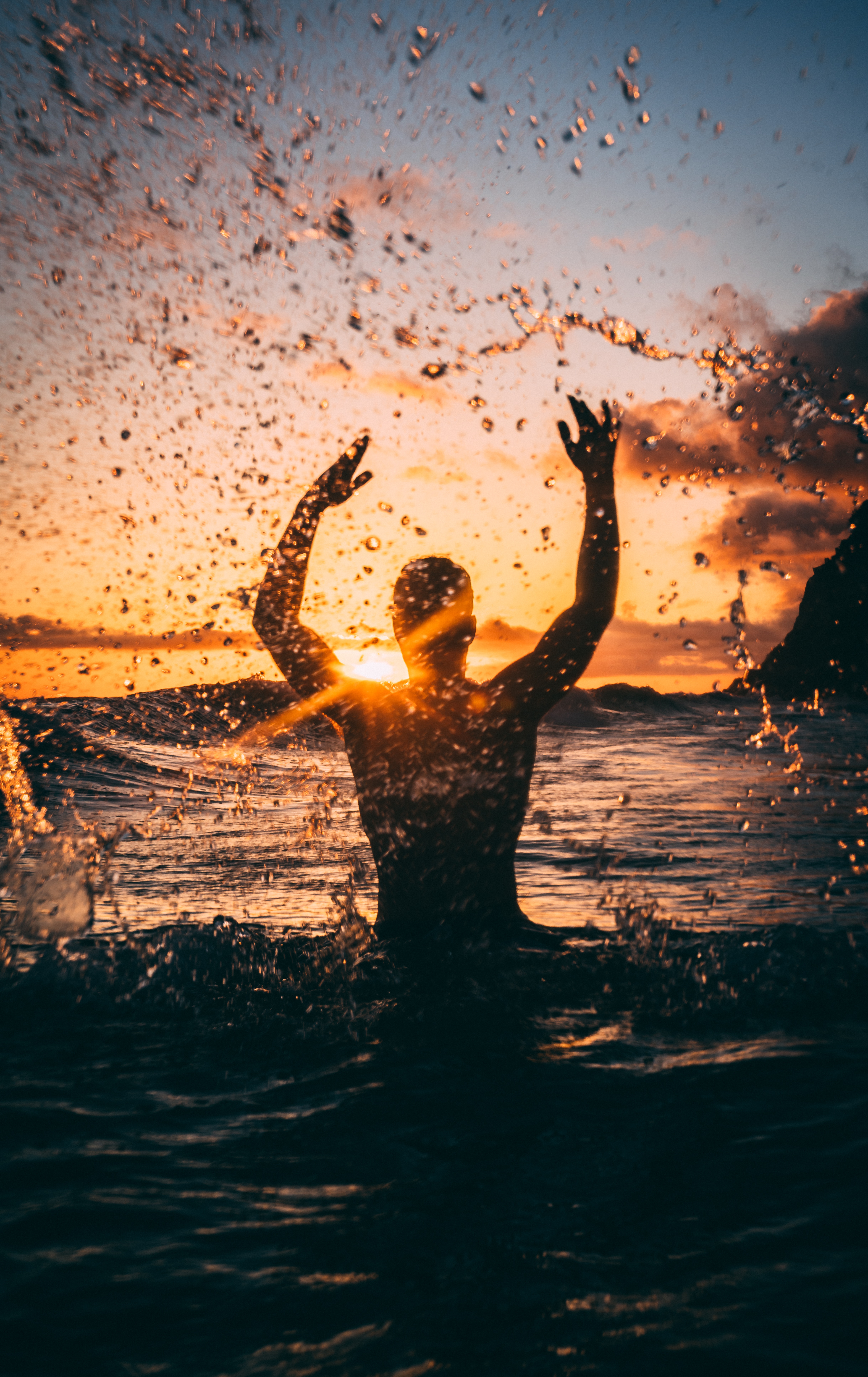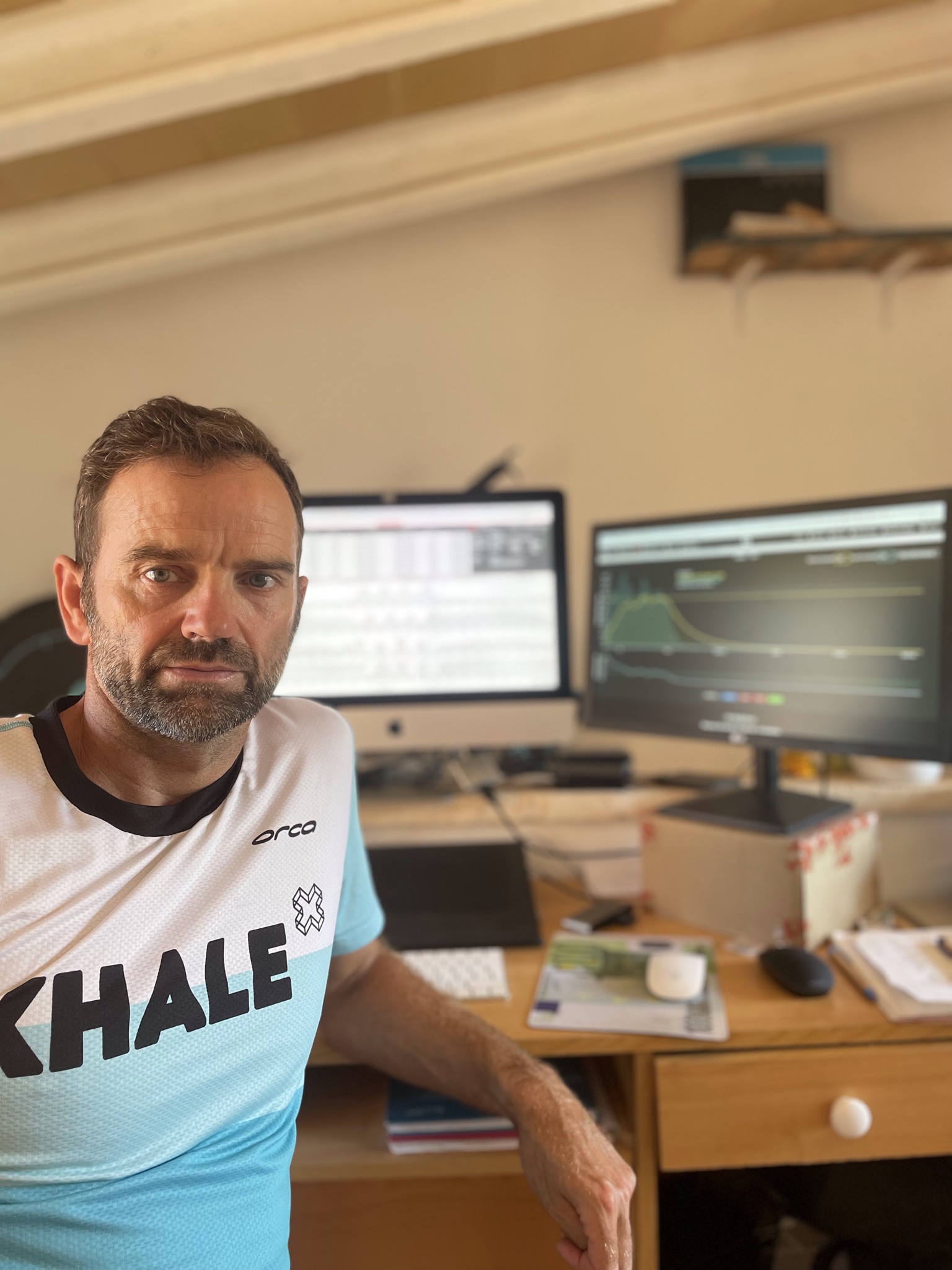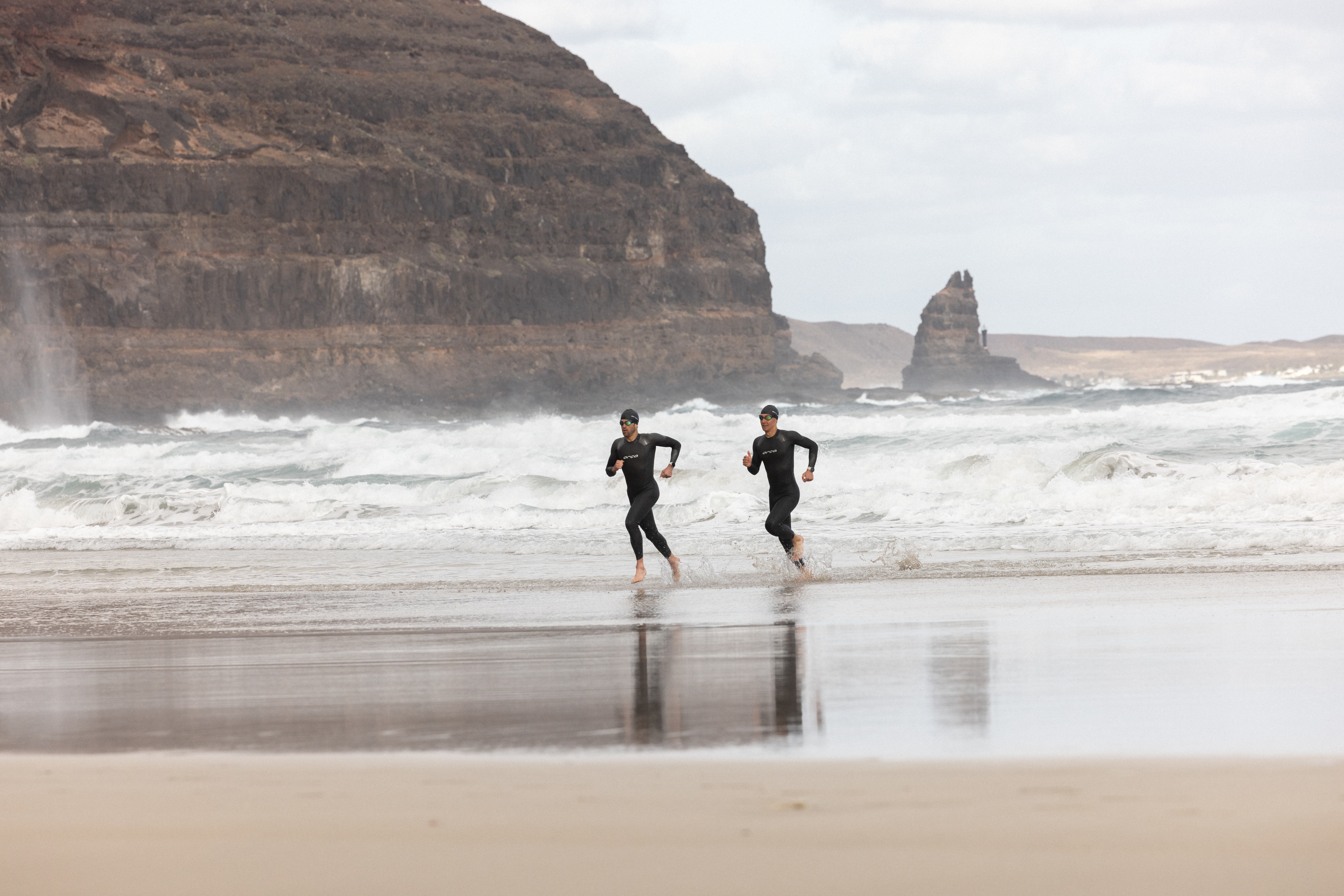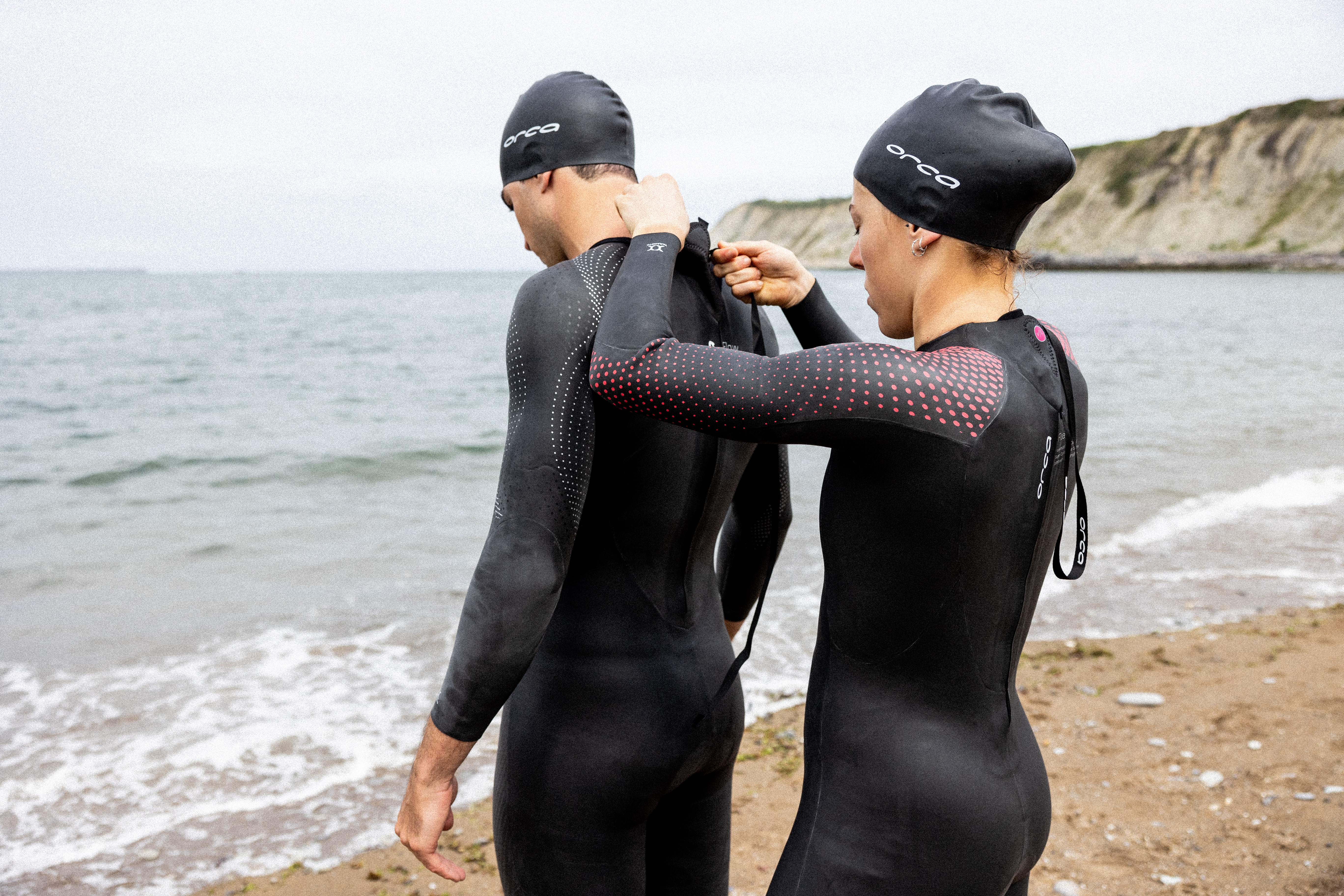Are they the same?
Mark Livesey, Xhale Co-founder

Open water skills
I am often asked by triathletes why their pool speed doesn’t translate to open water. Perhaps they swim faster than others in the pool, and then when in open water they can’t keep up. It can be frustrating, and the temptation is to feel as if your pool training is just not working. Of course, that makes no sense, but efficient open water swimming is an art and one most people do not practice enough.
I won’t talk about the dynamics of the PRO race here; making a pack at the start of a swim, start line positioning etc – that is another topic for another day. But for the majority of athletes who are struggling to convert pool speed to open water, here are some things to think about.
1. Anxiety
If you are afraid in open water then you are not alone. If swimming in open water is not something you have grown up with, the chances are you feel slightly apprehensive especially when getting into a body of water that you don’t know. For some this is made better in the presence of others, but for others the thought of swimming adjacent to hundreds of other athletes makes it even worse. If you feel an overwhelming sense of anxiety about open water this is going to have a huge impact on your swim. Your heart rate will be elevated, your stroke could be shorter and less smooth, and you may be tempted to stop swimming often to look up and make sure you are safe. Addressing this fear is the simplest way to improve your open water performance. You can get help from an expert, but for the majority of people just swimming regularly in open water will reduce this anxiety a lot. Normalise the experience while swimming in safe places with people who can help you overcome your fears.
2. Types of Stroke
Swimming in a wetsuit – especially in rough conditions – benefits some stroke types over others. The wetsuit changes your body position in the water. Depending on how the buoyancy is distributed around the wetsuit, it may target different areas or lift different amounts. Wetsuits can also restrict extension at the front of the stroke and create resistance in the shoulders, especially in the recovery phase of the stroke where you don’t normally have resistance. If you have developed a high elbow stroke in the pool, it might be that in open water you feel more tired because of the work done against the restriction of the suit.
3. Eyesight
If you can’t see straight, then you can’t swim straight. For people with poor eyesight, add low sunlight, foggy goggles, short time to focus and a heap of other people in the way and it becomes very difficult to have any spatial awareness. If you struggle to see anything in open water then you need to either have goggles which are so good you never get leaks and can wear your contacts underneath, or have prescription goggles made so you can see at all times. Swimming in a straight line between points is the single most important factor in improving your swim times.
4. Drafting
Drafting in the water is a skill, but there is also an element of luck to it. In calm water, if you pick feet which are swimming at a consistent pace in a straight line, it can be easy to tuck in and get pulled along for minimal effort. However, if the water is rough or you pick feet which zigzag about with sudden changes in pace, staying on those feet will burn more energy than swimming at your own pace. The time you might gain from being there is probably going to be outweighed by the energy you burn with the stress of it. You can practice drafting in open water to make it much easier for yourself, and ultimately if you are good at this skill and get lucky it can really pay off.
5. Wetsuit quality and fit
Wetsuit technology has come a long way in the last ten years. Materials are more hydrodynamic, fit is more snug, and the range of sizes is more extensive to fit a wider variety of body shapes. Two swimmers who are the same in the pool, one with a high quality well fitted wetsuit and one with an old ill-fitting suit which lets water in and creates drag will have a huge differential in pace.
It sounds like a simple thing but most people don’t really “train” in open water, and they don’t train hard enough.
6. Open water training
It sounds like a simple thing but most people don’t really “train” in open water, and they don’t train hard enough. Training could include practicing getting into and out of the water if you are racing a beach start or finish (especially if there is going to be surf). It could include running in shallow water, diving without losing your goggles, and breakout pace for the start of your race. It could also include swimming efficiently around buoys, and sighting practice. But most of all it should include swimming hard in your wetsuit. If you never swim at race pace in your wetsuit in training then on race day it will not come naturally no matter how often you do tempo 400s in the pool.
There is plenty you can do to improve your open water performance – but of course most of it involves being in open water regularly which can be a challenge in certain parts of the world. Many wetsuit companies do thermal suits now to extend the open water season that bit longer – but even if you are restricted to the summer months, make it something that you do regularly and do well and your performance will benefit hugely.

About the author
Mark Livesey is a co-founder of Xhale, owner of The Brick Session Media, and still coaches a select few triathletes. He hosts The Brick Session podcast where he does his best to provide content which is not “vanilla” (and is always looking for good/controversial/funny guests). He is a film maker and producer and all of his content can be found on YouTube at The Brick Session channel. Mark also still competes in triathlons, seeks challenging outdoor adventures and spends most of his time trying to find new linkups through the gravel pathways of Mallorca.
Want your content featured?
If you would like to input to our Coaches’ Hub – or there is a topic you would like us to write about – why not send us your ideas? We are always looking for good content and it helps to promote your business.
Email: caroline@trainxhale.com




